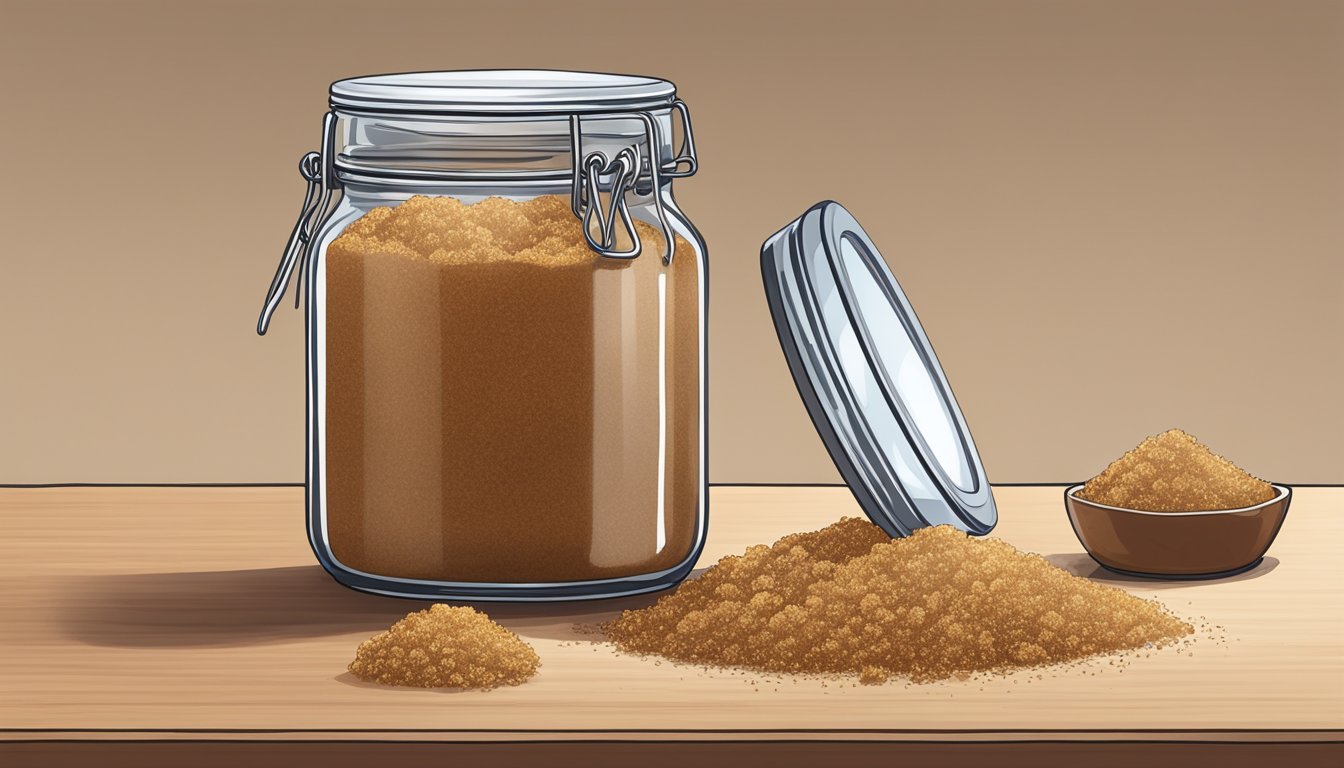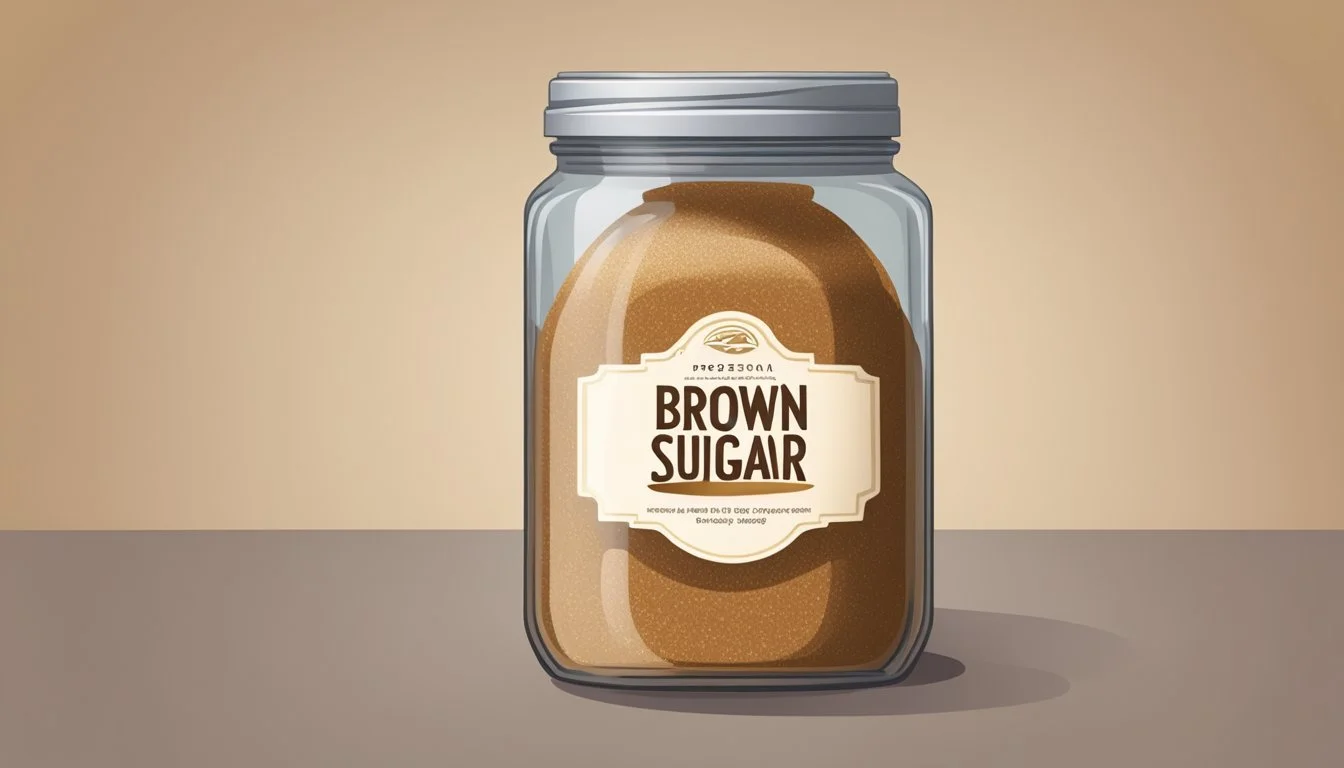Does Brown Sugar Go Bad?
Understanding Shelf Life and Storage Tips
Brown sugar, a staple sweetener in many kitchens, is known for its rich color and distinctive molasses flavor. A common question among consumers is whether this ingredient can expire or spoil. Unlike perishable food items, brown sugar does not go bad in the conventional sense, meaning it does not develop bacteria or mold when stored properly. Instead, brown sugar's most common issue is hardening due to the evaporation of its natural moisture.
The longevity of brown sugar is largely due to its sugar content, which acts as a preservative. Proper storage is key to maintaining its quality and preventing hardening. Brown sugar should be kept in a cool, dry place, away from heat and moisture. Preserving its soft texture is a matter of retaining the right moisture level. When hardened, brown sugar can typically be restored to its usable state with simple techniques to reintroduce moisture.
In the rare case that brown sugar develops mold or an unusual odor, this signals contamination and the sugar should be discarded. However, this scenario is unlikely and usually a result of improper storage. When stored under optimal conditions, brown sugar's shelf life is indefinite, making it a reliable and long-lasting ingredient for both cooking and baking.
Understanding Brown Sugar
In the context of sugar varieties and their respective shelf lives, brown sugar is distinct because of its unique composition and moisture content. This section explores the elements that make up brown sugar and how they affect its longevity.
Composition and Types
Brown sugar is primarily granulated sugar with added molasses, which lends it the characteristic flavor and moist texture. Based on the amount of molasses, brown sugar can be categorized as:
Light Brown Sugar: Generally contains about 3.5% molasses by weight.
Dark Brown Sugar: Richer in molasses, containing up to 6.5% by weight.
Other types of sugars like Demerara and powdered sugar differ from brown sugar. Demerara sugar, coarser in texture, also contains molasses but is less processed, whereas powdered sugar is finely ground sugar typically mixed with cornstarch. In contrast to white sugar, which is pure granulated sugar without molasses, brown sugar offers a distinct sweetness and texture that contributes to the taste of baked goods.
Shelf Life Fundamentals
The shelf life of brown sugar is influenced by the balance of sugar and molasses within it:
Preservative Nature: Sugar acts as a preservative due to its hygroscopic qualities, which makes brown sugar last indefinitely under ideal storage conditions.
Moisture Content: Molasses adds moisture to brown sugar, which can evaporate, leading to hardening. This is common and doesn't inherently mean the sugar has gone bad.
To maintain the desired texture, storing brown sugar in an airtight container is crucial to prevent moisture loss. If it hardens, it's usually possible to restore its softness. However, an off odor or presence of contaminants would indicate spoilage. Despite its longevity, the quality of brown sugar is best when it is used within two years.
Storage Solutions
To ensure that brown sugar retains its quality, proper storage solutions are essential. These solutions are designed to maintain the sugar’s texture and prevent hardening.
Proper Storage Techniques
Airtight Container: Storing brown sugar in an airtight container is imperative. This helps to keep out moisture and other contaminants that could lead to clumping or spoilage. For added convenience, one could use a container with a tight sealing lid that's easy to open and close.
Refrigerator/Freezer: Although not typically necessary, brown sugar can be stored in the refrigerator or freezer if the kitchen environment is exceptionally moist or warm. This is to prevent it from hardening due to excess moisture or melting due to heat.
Do's Don'ts Seal tightly Use containers with loose fittings Regularly check seal Expose to direct heat or sunlight Choose the right size Store near moisture or odors
Optimal Storage Conditions
Cool and Dry Place: Brown sugar thrives in cool and dry conditions. A cupboard away from the stove, oven, and other heat sources is ideal. A kitchen cabinet typically provides the necessary environment if it's not exposed to steam or heat from cooking appliances.
Consistent Temperature: Storing brown sugar at a constant temperature helps in preventing the hardening of sugar crystals. Dramatic temperature changes can cause condensation, leading to lump formation.
Location Temperature Moisture Kitchen cabinet Cool Low humidity Away from heat sources Consistent (preferably below 75°F) No direct exposure to moisture
By adhering to these specific storage techniques and conditions, brown sugar can remain soft and ready for use whenever a sweet touch is needed in cooking or baking.
Physical and Chemical Changes
In discussing the stability of brown sugar, it's essential to identify the key factors that contribute to its physical and chemical changes: primarily the hardening of the sugar due to moisture loss and how moisture content influences the sugar's condition.
Hardening of Sugar
When brown sugar loses moisture, it leads to hardening. The sugar crystals, which were once separated by a thin layer of molasses, stick together to form hard, solid clumps. This hardening is a physical change; the chemical composition of the sugar remains unchanged. However, this does not mean the sugar is unusable. Various techniques can soften and restore hardened brown sugar:
Placing a piece of bread or apple slice in the container overnight can reintroduce moisture.
Briefly heating brown sugar in a microwave, along with a damp paper towel, can soften the sugar.
These methods leverage the hygroscopic nature of sugar, meaning it readily absorbs moisture when it is made available.
Moisture Content and Sugar
The moisture content in brown sugar is pivotal to maintaining its soft texture. Proper storage and packaging are critical to prevent the sugar from drying out. To maintain an ideal moisture level, brown sugar should be kept in an airtight container to minimize exposure to heat and dry conditions. The following table summarizes the best practices for storing brown sugar:
Storage Factor Recommended Practice Container Airtight, moisture-proof Environment Cool, dry area Duration Indefinitely, as quality may diminish over time but sugar remains safe to consume
If stored improperly, brown sugar not only hardens but can potentially foster mold growth, although this is a rare occurrence since sugar itself is a preservative. Nevertheless, any presence of mold indicates spoilage, which then necessitates disposal of the affected sugar.
Signs of Spoilage
Knowing when brown sugar has gone bad is crucial to prevent spoiling a recipe or consuming contaminated products. The key signs include changes in sensory attributes and evidence of microbial growth.
Sensory Indicators
Brown sugar’s smell and flavor are its primary sensory indicators. Good quality brown sugar should smell sweet and rich. Any off-odors or the loss of its natural aroma can indicate spoilage. Similarly, taste should be a sweet, slightly molasses flavor. A change in taste could signify it has been contaminated or is past its best.
Microbial Growth and Contaminants
The presence of mold or microbial growth can be a clear sign of spoilage. Brown sugar should have a consistent color and texture. Any visible signs of mold, usually appearing as fuzzy spots of different colors, indicate contamination. Furthermore, the presence of bacteria or other contaminants will cause the sugar to harden excessively and become difficult to break apart, differing from natural clumping that can occur with slight moisture exposure.
Prevention and Restoration
Proper storage methods can prevent brown sugar from hardening, while several restoration techniques can rejuvenate hardened brown sugar for use.
Protecting Brown Sugar
Airtight Container: To ensure brown sugar retains its moisture and texture, it should be stored in an airtight container. This prevents exposure to air and moisture, which can lead to hardening of the sugar.
Food Safety: Keeping brown sugar in a secure container also protects it from pests and bug contamination. Bugs, insects, and ants are attracted to sweet substances; thus, proper sealing thwarts their access and maintains the quality of the brown sugar.
Reviving Brown Sugar
Damp Paper Towel Method: If brown sugar has hardened, placing a damp paper towel in the container and sealing it overnight can help restore its softness. The moisture from the paper towel will be absorbed by the sugar.
Natural Add-ins: Adding a slice of apple, a piece of bread, or a marshmallow to the brown sugar container can also re-moisturize the sugar. For a long-lasting solution, a terracotta brown sugar saver, which has been soaked in water, can be placed in the container to maintain softness.
Remember, these restoration methods are not permanent fixes; they are temporary measures to make brown sugar pliable for immediate use.
Usage Tips
Efficient use of brown sugar in the kitchen extends its shelf life and ensures the flavor of recipes remains consistent. Proper handling and revitalization methods allow utilization even when sugar hardens over time.
Utilizing Hardened Brown Sugar
When brown sugar hardens, it hasn't gone bad; it simply has lost moisture. To restore it to a usable state, one can:
Place a slice of apple or a few marshmallows in the container with the hardened sugar to add moisture back into the sugar.
Utilize a sugar saver, a small clay piece that, when soaked in water and placed with the sugar, helps maintain optimal humidity.
This little piece of foresight can rescue a batch of sugar that might seem unusable, ensuring that every last granule can contribute to the quality of your baked goods.
Leveraging Sweetness in Recipes
Incorporating brown sugar effectively in recipes can enhance the taste of cookies and other baked goods. A few tips to guarantee optimal sweetness and quality include:
Cream the brown sugar with butter until pale and fluffy before adding an egg to create a smooth mixture for cookie dough.
For recipes requiring more nuanced sweetness, combine leftover brown sugar with a hint of honey to achieve a deeper flavor profile.
Each ingredient should be added with precision to maintain the balance of flavors, ensuring a delightful consumption experience. Remember, leftover sugar can often be preserved and used in later recipes, avoiding waste and maintaining the high quality of one's culinary creations.
Frequently Asked Questions
In addressing common concerns about brown sugar's shelf life and alternatives, clarity on its expiration patterns and substitute options is essential.
Expiration and Edibility
Brown sugar's longevity is significant due to its nature as a preservative. It does not have a definitive expiration date but can last indefinitely if stored under ideal conditions, which involve keeping it in a cool, dry place away from direct sunlight. Brown sugar hardens over time as it loses moisture, which is commonly mistaken for spoiling. In most cases, hardened brown sugar is not spoiled but may have lost its aroma and sweet flavor. To restore its softness, one can use a food processor or blender to break down the clumps.
Room Temperature Storage: Sugar should be kept at room temperature to maintain its quality.
Sealing: Airtight containers prevent moisture loss, preserving sugar's texture.
Aroma: A loss of aroma can indicate sugar's diminished freshness.
Substitutes and Alternatives
In cases where brown sugar is unavailable or undesirable, there are various substitutes that can be used depending on the recipe's requirements. A blend of white sugar and molasses can replicate both the texture and taste of brown sugar. Other alternatives include:
White sugar with maple syrup or honey (to imitate sweetness)
Coconut sugar: for a more health-conscious choice with a similar flavor profile.
Substitute Comparison to Brown Sugar White Sugar Less moist, no molasses flavor Coconut Sugar Similar moisture, less sweet
When substituting, it’s crucial to consider the role that brown sugar plays in the overall composition of the dish, as alternatives may alter the outcome in terms of texture, flavor, and moisture levels.




